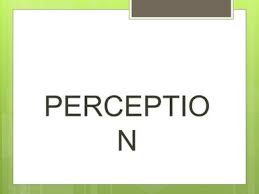Perspectives on Perception-Nursing paper Examples
Chapter six examines different perceptions of the external environment by infants, children, adolescents, and adults at various stages of their lives. The chapter ascertains whether the ability to understand the world around us is largely determined by innate biological factors or acquired through experience and learning. Constructivists, nativists, and ecologists have different perspectives on the topic (Perspectives on Perception-Nursing paper Examples).

According to constructivists, including Jean Piaget, perceptions of the environment are developed over time through learning through constant, consistent interactions and figuring out meanings (Sigelman & Rider, 2014). Nativists argue that the world’s perceptions are constructed by innate capabilities and maturational programs clearly defined through an innate plan. From an ecological viewpoint, current environmental situations delineate perception drives action and provide information about what objects in the environment we can afford or can offer us (Perspectives on Perception-Nursing paper Examples).
The chapter notes that we come equipped with functioning sensory systems that determine future perceptions of the environment and people around us at birth. Researchers have established that infants have well-developed perceptual capabilities even before birth which are evident through early behaviors (Sigelman & Rider, 2014). Moreover, researchers can determine what infants can perceive and cannot use advanced techniques such as habituation, evoked potentials, preferential looking, and operant conditioning.
Although their perception of color is not defined by black and white, infants are sensitive to color. Even before birth, the fetus responds to the brightness of varying extremes. However, between 2 to 3 months, an infant’s visuals become well-refined and start identifying patterns and trends around them. Apart from developing subtle visual capabilities, spatial and auditory perceptions develop rapidly and, at seven months, begin to show fears and concerns and distinguish speech sounds (Perspectives on Perception-Nursing paper Examples).
Furthermore, the chapter establishes confounding evidence to support the constructivist, nativist, and ecological theories. At birth, the chemical senses of taste and smell are well developed so are the somesthetic senses depicting sensitivity to touch, temperature, and pain.
Sensory and perceptual capabilities are present before and after birth, innate, and influenced by past experiences. The environment also plays a critical role in development processes, given that infants seek to explore their immediate surroundings, helping them further develop their sensory and perceptual skills (Perspectives on Perception-Nursing paper Examples).
Adolescence is an immediate stage just after childhood. Although the chapter reports little on sensation, attention, and perception during adolescence, it notes that some childhood developments are not completed until then. Some of the issues that emanate during adolescence include potential insults to hearing from exposure to loud noise, refinements in attention, and expanding taste horizons (Sigelman & Rider, 2014) (Perspectives on Perception-Nursing paper Examples).
Cultural variations also form part of the world’s different sensory stimulation and perceptions, meaning that perceptual preferences vary from one culture to another. The variations are not substantial enough to affect our sensory receptors but influence the perception and interpretation of signals throughout infancy, childhood, and adolescence (Perspectives on Perception-Nursing paper Examples).
During infancy until adolescence, sensory and perceptual capacities increase gradually, but the sensory capabilities decrease upon reaching adulthood and beyond. This is often witnessed when one experiences hearing difficulties and struggles to look in the dark, especially during their 40s (Perspectives on Perception-Nursing paper Examples).
References
Adults often experience lapses in regular activity and are characterized by rising sensory thresholds and declining perceptual processing of sensory information. In a visual-related context, adult conditions can include clouding the lens, thickening the lens, retinal changes, and reduced pupil activity (Sigelman & Rider, 2014). Hearing capabilities reduce with one’s age, with critical conditions requiring the use of hearing aids to detect high-pitched sounds. Also, chemical senses of taste and smell reduce, and often you find adults struggling to recognize and enjoy their meals. Some lose senses of touch, temperature, and pain sensitivity.
Sigelman, C. K., & Rider, E. A. (2014). Life-span human development. Nelson Education.
A Page will cost you $12, however, this varies with your deadline.
We have a team of expert nursing writers ready to help with your nursing assignments. They will save you time, and improve your grades.
Whatever your goals are, expect plagiarism-free works, on-time delivery, and 24/7 support from us.
Here is your 15% off to get started.
Simply:
- Place your order (Place Order)
- Click on Enter Promo Code after adding your instructions
- Insert your code – Get20
All the Best,
Cathy, CS


